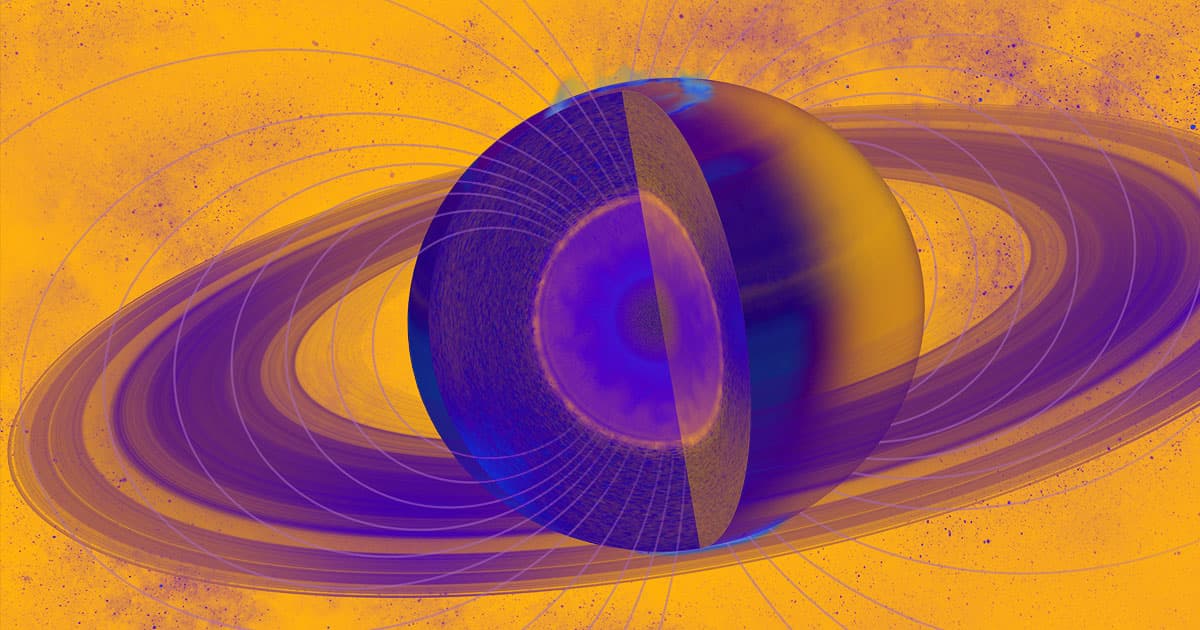In 2017, the Cassini spacecraft plunged into Saturn, ending an exploratory mission that had lasted nearly two decades.
But even that final act has proven incredibly useful to scientists, some of whom have now used the data from Cassini's final transmission to make a remarkable discovery about Saturn: the gas giant's liquid interior might be viscous, flowing "like honey."
First, here's some of what we already knew about Saturn prior to Cassini's death dive.
The gas giant has a solid metallic core surrounded by a layer of rocky material. That, in turn, is surrounded by a layer of liquid metallic hydrogen enveloped by a layer of liquid hydrogen. Beyond all of that is a layer of gases, with powerful winds known as jet streams swirling around Saturn's atmosphere.
When Cassini dove into Saturn, it measured the planet's gravitational field. Using those measurements, scientists determined that the jet streams stopped about 8,500 kilometers (5,281 miles) inside the planet — but no one knew why the winds stopped at that particular depth.
Now, in a new study published in the journal Physical Review Fluids, an international team of researchers details a theoretical model of Saturn that they say could provide the answer.
"Deep into Saturn, where the pressure is high, the gas becomes a liquid that conducts electricity and is more strongly influenced by the planet's magnetic field," researcher Navid Constantino said in a press release. "An electrically conducting, flowing liquid will bend or distort a magnetic field. We showed that the distortion of the magnetic field makes the fluid more viscous, like honey."
The researchers believe this viscosity might be the reason the jet streams can't reach any further into Saturn. And while they plan to conduct more studies to test the theory, they're already encouraged by the results they've seen so far.
"The mysteries of what goes on inside Saturn and the other gas giants in our Solar System are now slowly starting to be unveiled," Constantinou said. "Our findings provide a promising way for interpreting the data from planetary missions and offer a better understanding of the planets in our Solar System and beyond."
READ MORE: Wind mystery inside gas giant Saturn begins to unravel [Australian National University]
More on Cassini: It’s Official: Cassini Just Completed Its Death Dive Into Saturn
Share This Article
